Decomposing and Composing Numbers – Working With Accelerated Kindergartners
We discovered why decomposing and composing numbers really is crazy important and dug into our daily schedule to find out how to easily teach composing numbers regularly.
This is part 3 of this series – it’s all about taking this standard to a new level!
Let’s review real quick:
Working on decomposing and composing numbers into their groups of tens and ones is a key standard in kindergarten.
They are expected to grasp this concept with numbers 11-19… but what about students who are ready for an accelerated pace?
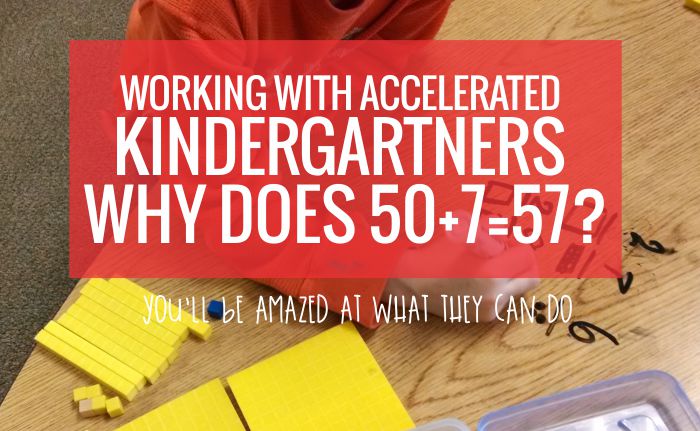
Here’s a glimpse into a portion of a guided math lesson I did with a group of advanced kinders.
We are moving into expressing this standard with equations.
Pose the question: Why does 50+7=57?
I am about to ask a question of my accelerated math group when we meet. In my other math groups, I ask, “Why does 10+6=16?“
Now, I am prepared. Just like when I asked earlier this year, “Why do teens have a 1?” I know that I might face blank stares and we might be headed into murky water discussion.
Maybe.
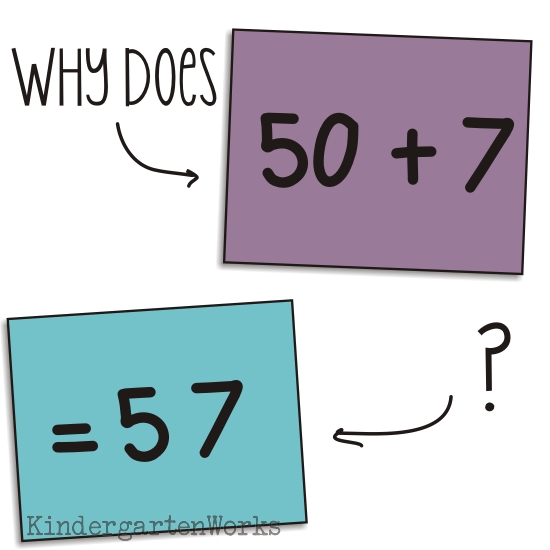
So I ask. “Why does 50+7=57?” I write out this equation onto my small white board in the teacher zone.
Students draw out their thinking
I usually ask my students to draw or write about their thinking whenever I pose questions like this.
Why draw?
Because sometimes they have a harder time verbalizing their thinking.
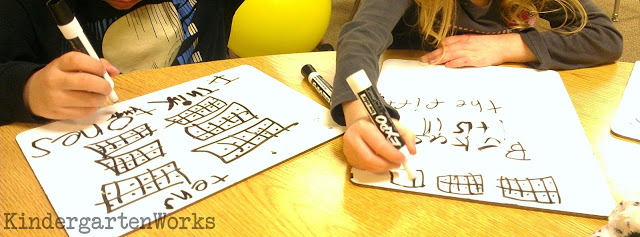
Give ’em a drawing to talk about and they are much more successful!
How some figure it out
Last week I began to pre-assess my two highest math groups on this concept to see if we’d need practice or need to address any misconceptions.
With these groups of students {and I’ll be totally honest that I have an exceptionally high number of students that have these skills this year in comparison to any other year} I know that their number sense is stronger and can apply the same concept, just deeper.
So we’re exploring, “Why does 50+7=57?”
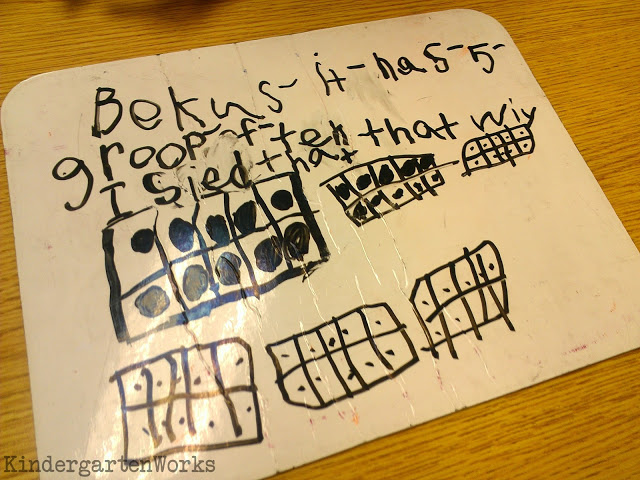
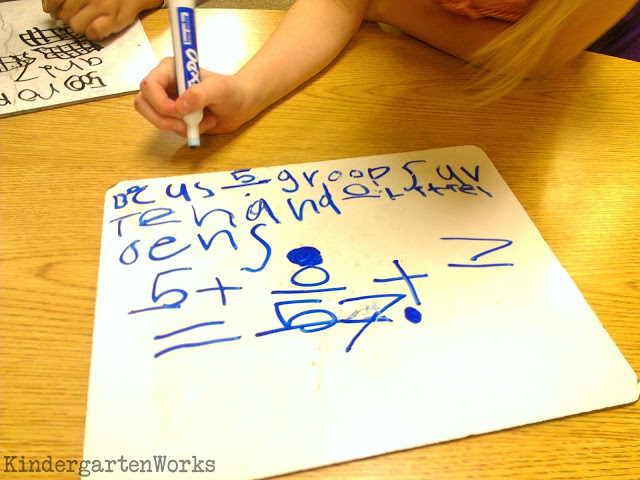
I simply asked them to “show their thinking” {they must seriously hear that 12 times a day} and handed them a whiteboard.
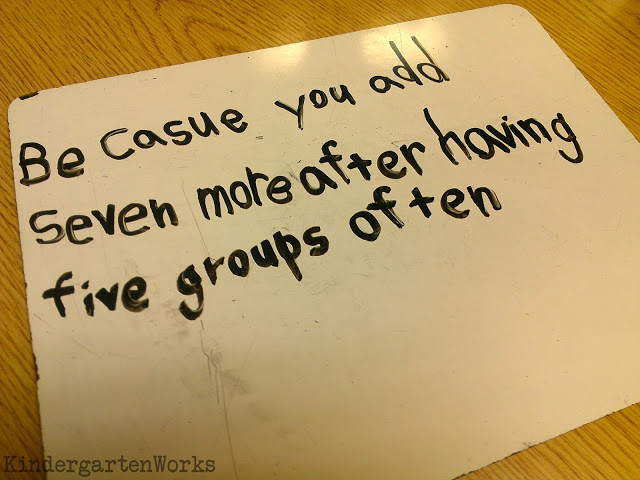
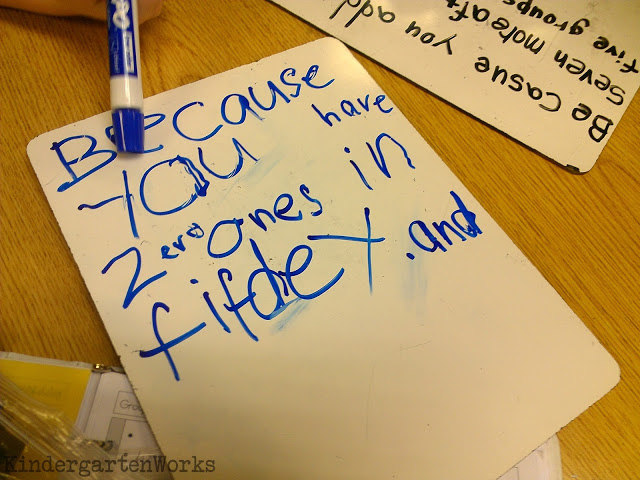
Their responses gave me great insight as to where we can work next and that making the transition to equations will be a natural next step for them.
What’s the big misconception?
You should know that with all of my math groups we’ve worked intentionally to practice understanding teens and other numbers and their value in tens and ones. Yet, that was with pictures and words like “group of tens and ones.”
What I’ve found is that often a big misconception comes into place when transitioning from pictures and words into equations!

They are used to seeing or representing 16 as 1 group of ten and 6 ones. What if they were to just take those numbers (a 1 and a 6) like they’ve always used to this point and just put it into an equation?
That means to show what 16 is in a composing or decomposing equation, they want to write:
1+6=16 or 16=1+6
So we usually have to explore what they’ve written down on their whiteboard and question, “Does that make sense?”
Well, of course not…
Then we try to see what else we could put into the equation because equations don’t have words in them… so no “group of ten” is showing up in the equation.
How to give guided practice in small groups
So no blank stares this year when it came time to approaching equations with this particular group of accelerated kinders, though I did find that when we practiced it more in our booklets that we had to work through the common misconception with two students.
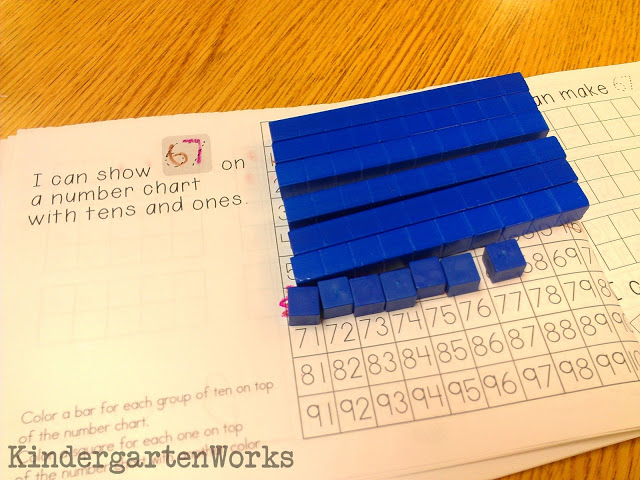
With enough practice and learning to self-check by asking like, “Can 8+1=81?” we are figuring it out and moving on!
Be sure to follow up with independent practice
As the natural follow up after I’ve seen we’ve made good progress in a skill area I’m sure to put materials into our practice zone.
For more practice on decomposing and composing numbers using equations, I’ll be adding updated materials into our independent practice zone to improve accuracy and fluency. That means I’ll add equation cards for our magna doodle boards and their update their favorite I SPY activity with new mats!
With these high groups, we even explored numbers well into the hundreds as the year went on – they were so excited!
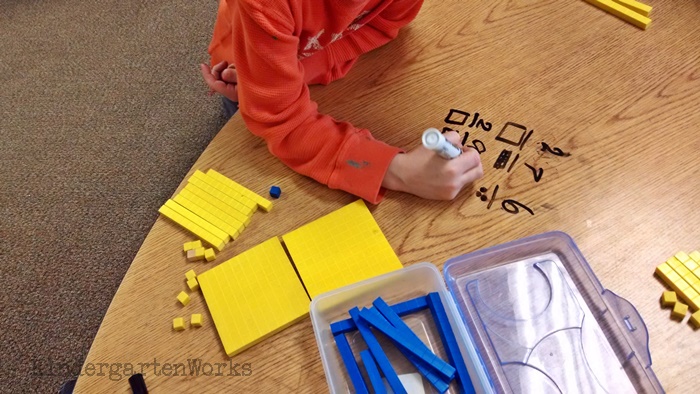
I hope you enjoyed this series as I enjoyed thinking through what I’ve learned about working with kinders on this standard.
Did I mention that I had nooo clue what it even meant when I first read it? We all learn and grow. {wink}

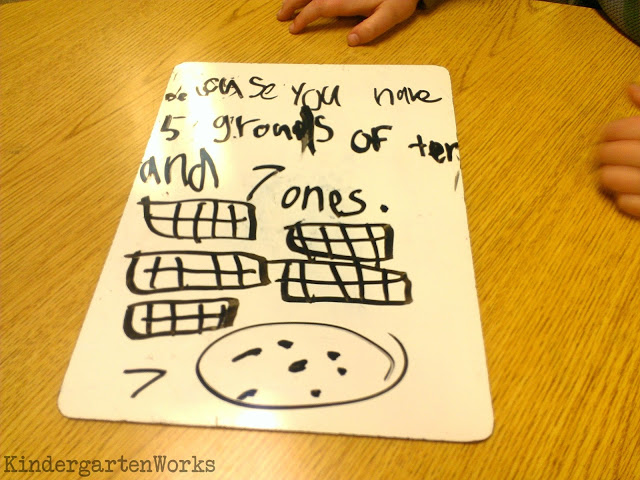
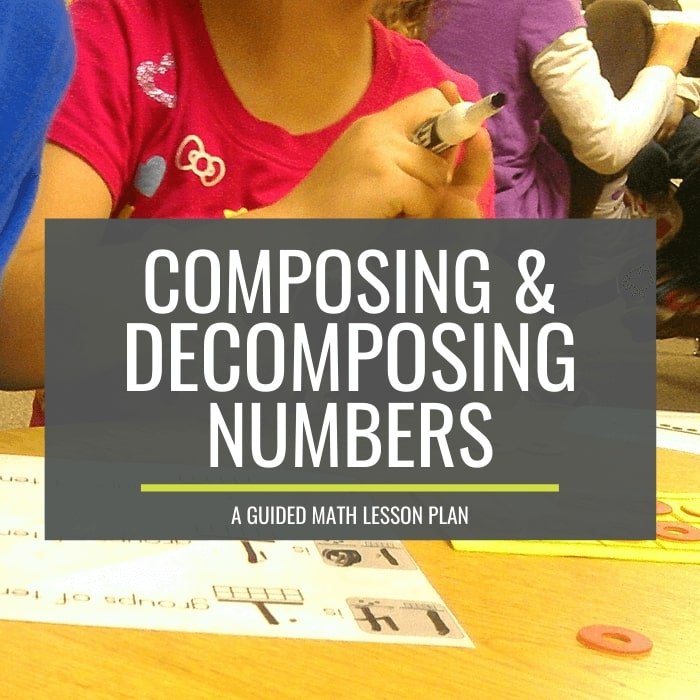
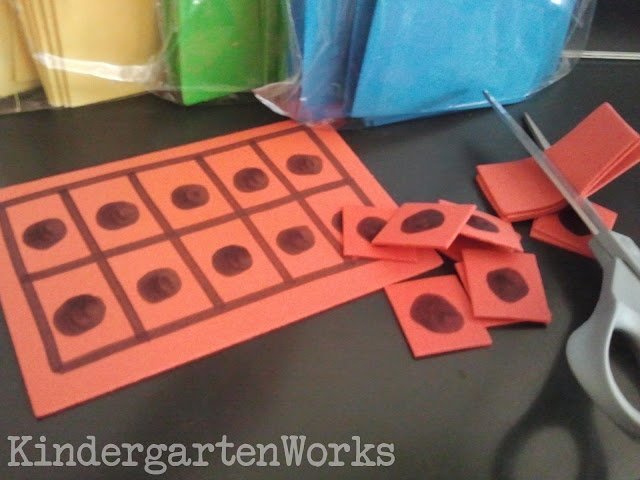

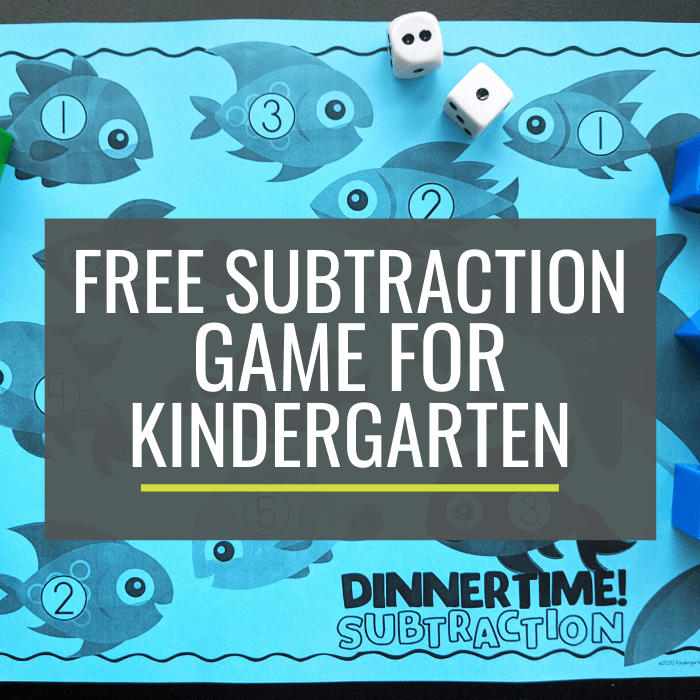
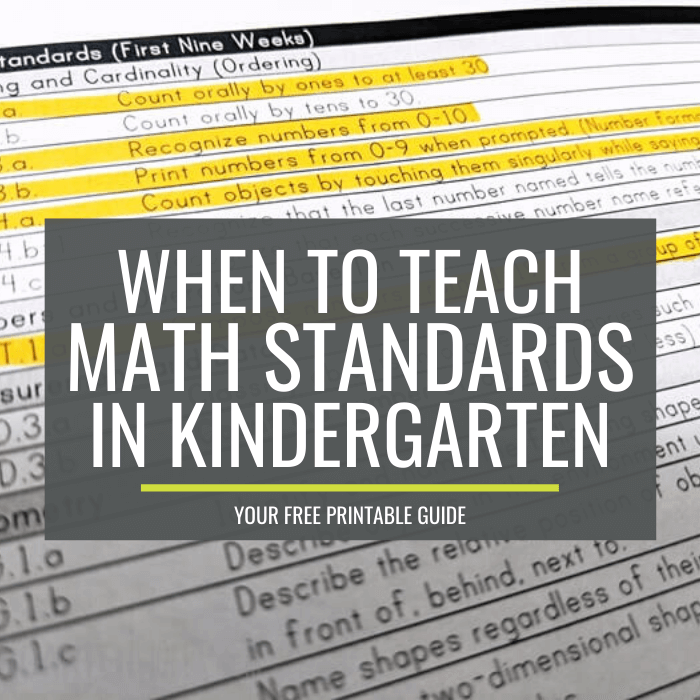
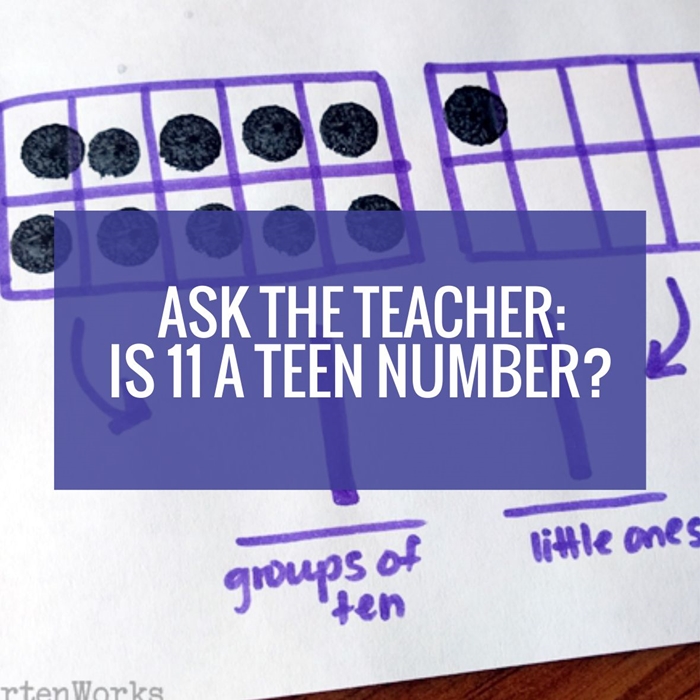
I love this. Tens and ones also lead to a lot of regrouping with addition and subtraction in 2nd and 3rd grade so it’s very beneficial for students to constantly see and work with place value. I bet your a fabulous teacher. The way you speak about your kiddos and teaching them tells me you’ve put your heart into it and pay attention to their needs. Kids never forget their kindergarten teacher. Your kids are lucky
I have taught Algebra 1 for 8 years and I have a Kindergartener this year. This is a GREAT explanation of why understanding decomposition of numbers is so important! Thank you.
HI! Thank you so much for all of your efforts and hard work on this topic. I have been to scared to try and tackle it but I have started this week using your ideas and thinking. Wish me luck!
Yes absolutely – good luck! Keep us posted – lots of practice really helps my kinders.
– Leslie
Leslie, I love this and hope you post it on Math Monday Blog Hop! 🙂
http://love2learn2day.blogspot.com/2013/04/math-monday-blog-hop-94-april-8-2013.html
Thanks for the reminder Cindy. I’ll be sure to do that!
Hi Leslie! Thank you so much for your ideas. Can you explain more about the activities in your picture of independent practice ideas? Are they in your composing and decomposing packet? I haven’t purchased it yet. Have you heard of Number Talks by Sherry Parrish?We use this a lot and it really helps our kids see the groups and then apply it to their addition and subtraction. We also use
Teaching Number in the Classroom with 4-8 year olds (the purple book) by Robert Wright (and other authors). They also have the green and red book that are great.
Carmen,
I have to admit I’ve not used those resources, so I’m gonna keep my eyes open. Thanks for the tip! The picture you’re referring to are games and activity resources that I’ve compiled from many places. I try to pull what’ll give them enough practice and help work towards mastery 😉
– Leslie
You should definitely look into them. I’ve learned so much about structuring numbers (the ten frames, dot patterns (regular, irregular), finger patterns, etc) can help them with addition and subtraction. It’s amazing to see them use the strategies of making ten to solve a problem like 9+5. I’ve heard them say things like, “I moved one over to make full ten frame and then 10 and 4 is fourteen.” The books by Robert Wright & friends go into a lot of detail about what is happening at each developmental stage. Kathy Richardson’s Developing Number Concepts is also a great resource.
Thank you for your wonderful ideas! I am moving from 1st to kinder next year. Your blog has been so helpful to me as I prepare. Your ten frame font is the smartest idea!
Thanks Jennifer – the ten frame font does save me lots of time. I’d love to hear more about your adventures as you transition K. Keep me in the loop!
– Leslie